I want to create a log window where I show records of error or success messages.
Please tell me any solution to insert text in text_box from any widget in current application.
Is any solution like we use textvariable
Purpose: Suppose we have two tabs, in one we are downloading something and some error comes in it, then this error is inserted in the text box of the other tab.
I am updating my question to get better answer.
File Structure:
downloader.py
import tkinter as tk
class DownloadWindow(tk.Frame):
def __init__(self, parent):
super().__init__(parent)
################# self configure ##########################
self.columnconfigure(0, weight=1)
############### entry ################################
self.entry = tk.Entry(self)
self.entry.grid(row=0, column=0, sticky='nsew')
self.entry.insert(0, 'I am error send me to Logs...')
################ Button #################################
self.button = tk.Button(self, text='Send to Log')
self.button.grid(row=1, column=0, sticky='nsew')
insert.py
"""
Help me to write a function in this module for button in downloader
"""
logs.py
import tkinter as tk
class LogWindow(tk.Frame):
def __init__(self, parent):
super().__init__(parent)
################# self configure ##########################
self.rowconfigure(0, weight=1)
self.columnconfigure(0, weight=1)
self.text_box = tk.Text(self, wrap=None, bg='black', font='roboto 14 bold')
self.text_box.grid(row=0, column=0, sticky='nsew')
self.scroller = tk.Scrollbar(self, command=self.text_box.yview, orient='vertical')
self.text_box.configure(yscrollcommand=self.scroller.set)
self.scroller.grid(row=0, column=1, sticky='nse')
self.text_box.tag_configure('welcome', foreground='white', background='black')
self.text_box.tag_configure('error', foreground='red')
self.text_box.tag_configure('success', foreground='green')
self.text_box.insert('end', '>>> Welcome to Log Window', 'welcome')
self.text_box.insert('end', '\n>>> Completed', 'success')
self.text_box.insert('end', '\n>>> Something Wrong in Data Download', 'error')
luncher.py
import tkinter as tk
from tkinter import ttk
from Test.logs import LogWindow
from Test.downloader import DownloadWindow
root = tk.Tk()
base_tab = ttk.Notebook(root)
base_tab.grid(row=0, column=0, sticky='nsew')
base_tab.add(DownloadWindow(base_tab), text='Download')
base_tab.add(LogWindow(base_tab), text='Logs')
root.mainloop()
Screenshot:
Final Update and Goal Achived
Added In downloader.py
self.button.config(command=self.create_log)
def create_log(self):
write_log(self.entry.get())
Added In insert.py
def write_log(text):
with open('logs_data.txt', 'a') as log:
log.write(f'\n{text}')
Added In logs.py
self.show_log()
def show_log(self):
global file_name, cached_stamp
stamp = os.path.getmtime(file_name)
if stamp != cached_stamp:
with open(file_name, 'r') as log:
data = log.readlines()
self.text_box.insert('end', f'\n{data[-1]}', 'success')
cached_stamp = stamp
self.after(1000, self.show_log)
Conclusion
I am appending each log in .txt file and reading them in every sec. from LogWindow and detecting change. If change occur then inserting in Text widget.


